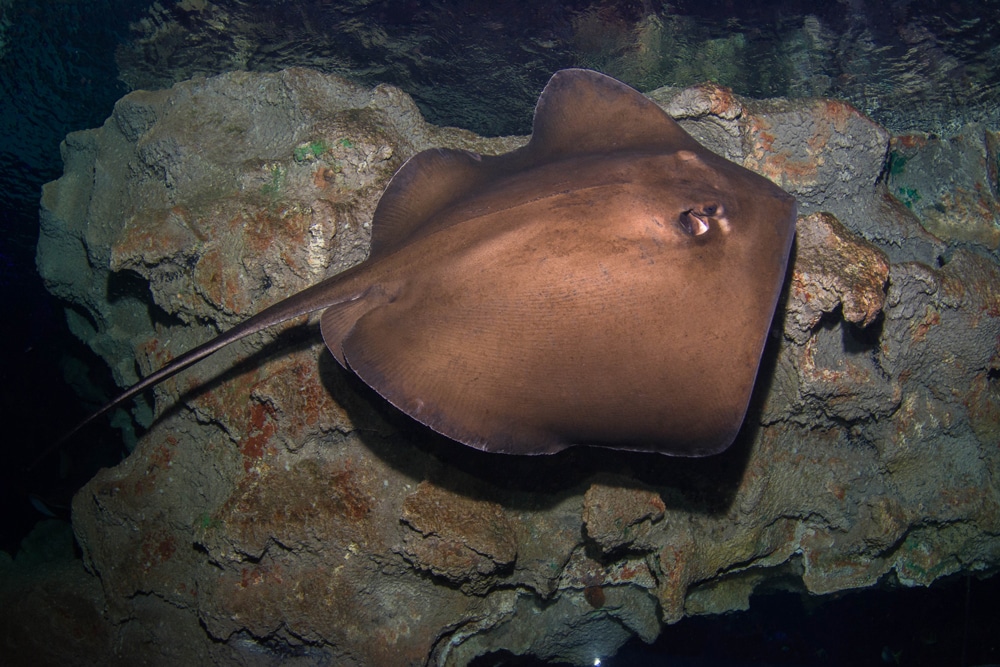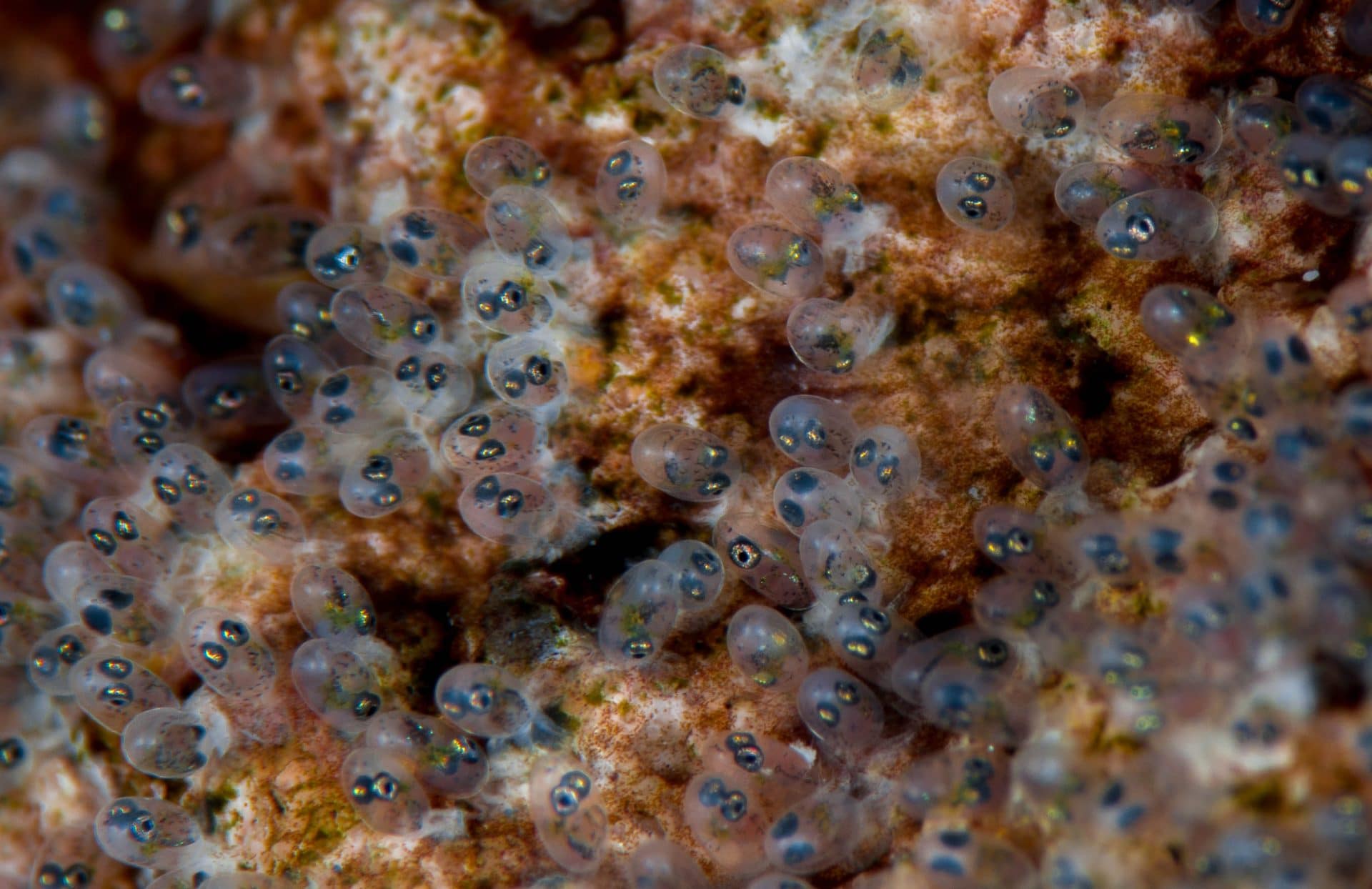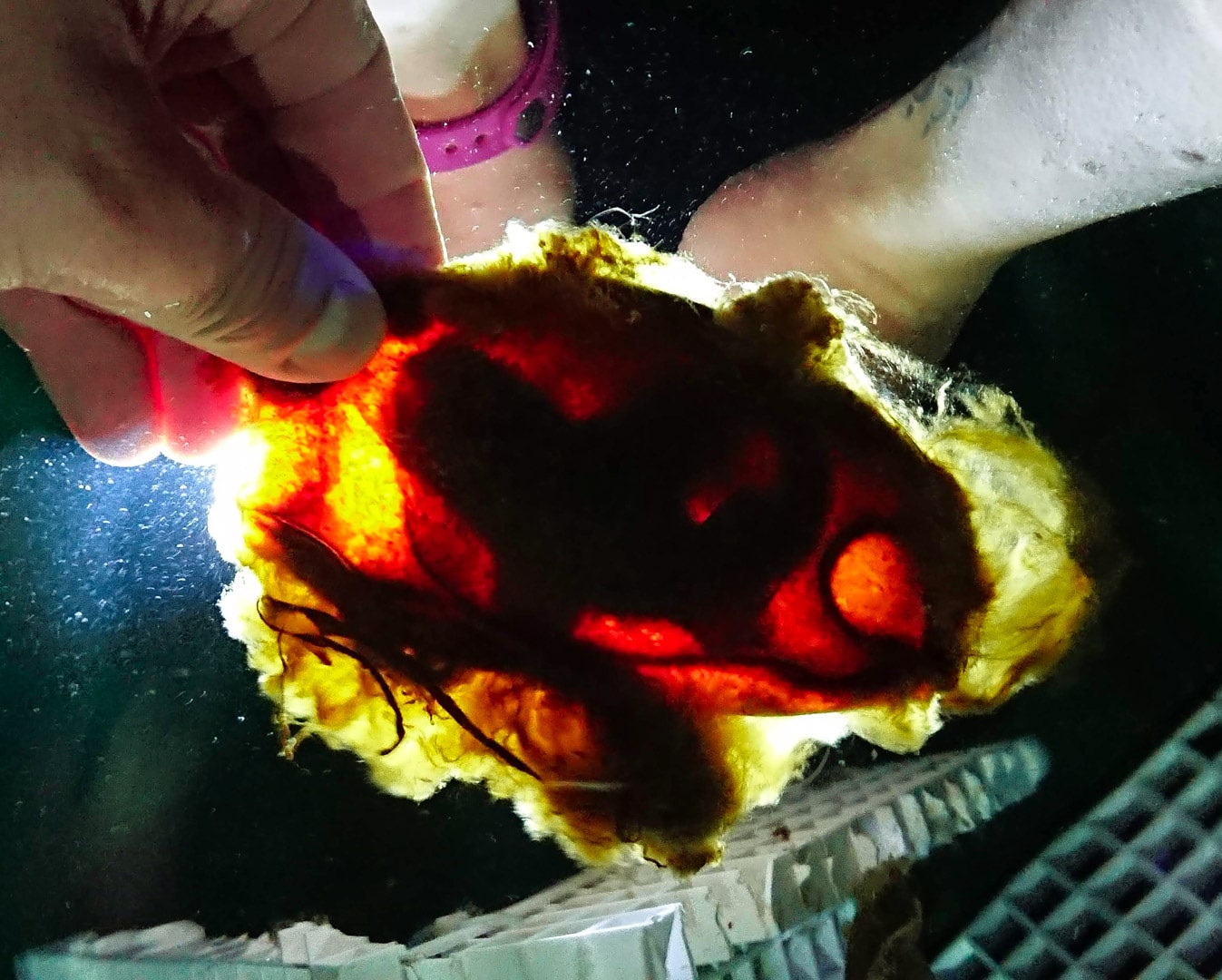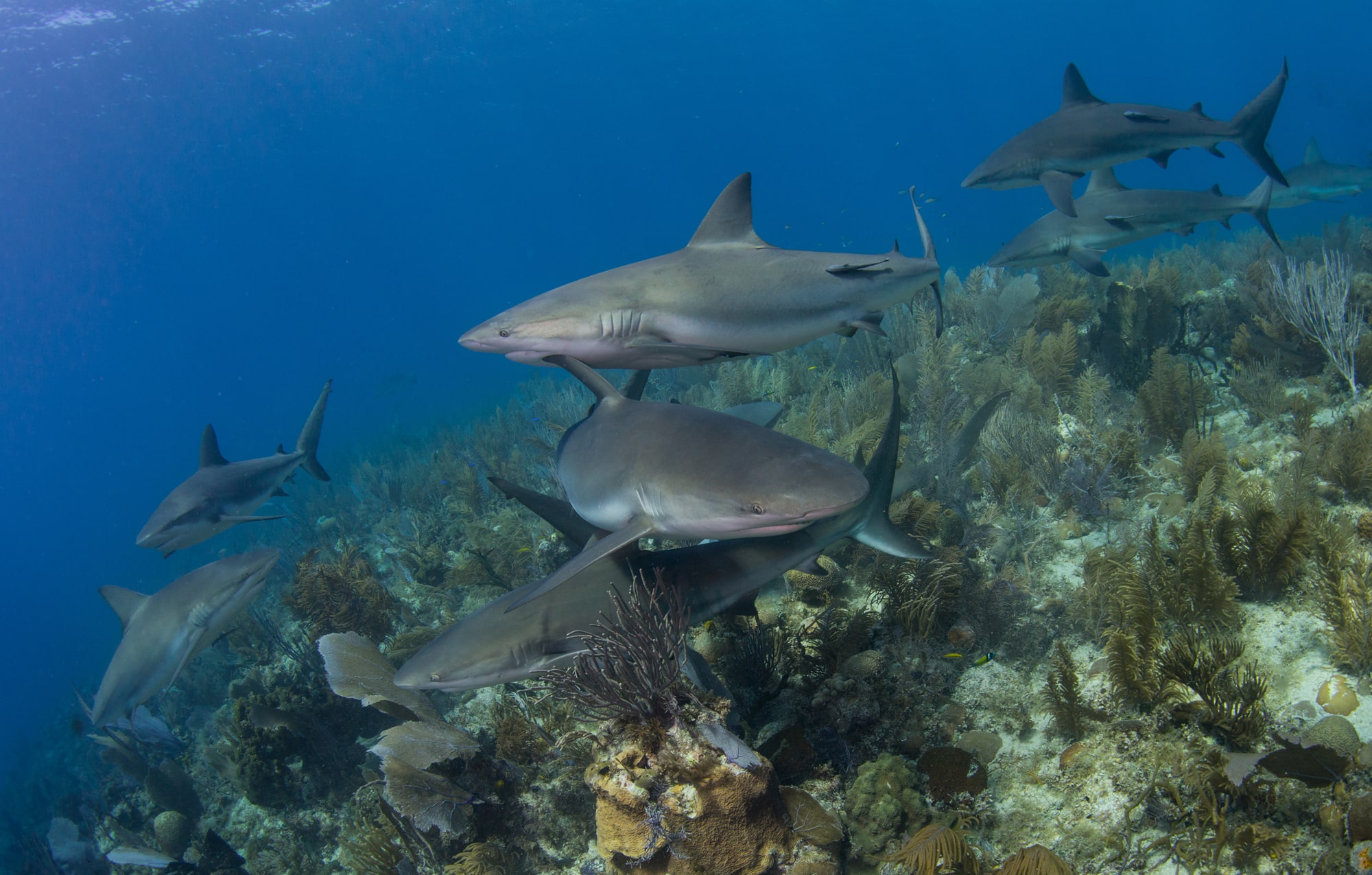Marine Life & Conservation
Breeding at Blue Planet

Breeding in the main tank at Blue Planet
Here at Blue Planet Aquarium we have many animals that live in our main tank, everything from our Sand Tigers all the way down to our Goliath Grouper. But there are a few animals in our main tank that breed on a more than Regular basis. In this article we are going to talk about three of them.
The first one is instantly recognisable as it is one of our signature animals, the Southern Atlantic Stingray. This species can grow up to nearly 5 feet across, with males being significantly smaller at around 2 feet across. Here at Blue Planet we have six adult stingrays, one male and five females with many of their offspring in a separate section of the tank. There are two main females who are breeding, and their names are “Big Bertha” and “Greedy” and we usually expect a litter from each between July and August, this can be anything between 2 – 6 pups on average per litter.
When we find pups in the tank we immediately drop whatever task we’re doing at the time and grab the ray nets (a specially designed flat net that can zip-up) in order to catch them. Every time we catch a pup we will keep going back into the tank until we’re satisfied that all pups have been captured. In the immediate days following the initial birth we will keep our eyes out for any other pups that may appear during the next few days.
Once captured the animals are placed in quarantine which is separate from the main exhibit. They’re kept here for around 6 weeks just so they get used to hand feeding and so that they can grow slightly before they go into the reef section, which is a smaller section of the main tank away from the larger sharks. The animals are kept until they’re large enough to either be moved to a different collection or go on display.
The next animal is probably the least noticed by our guests, it’s a small fish called a Sergeant-Major Damselfish. In the last year we’ve had an unbelievable number of clutches of such a vast amount that we’re finding new nests every day. The way in which they breed is quite fascinating.
Sergeant-Major Damselfish males lure females in with audio cues and “Signal Jumping” – this is where the male will swim erratically up and down, once the female has been attracted they will both change from their light blueish-green colour and turn almost completely dark blue until you can barely see their stripes, and males will develop a bright white patch on his cheek.
The female will lay up to 20,000 eggs and apparently there can be up to four females that add to any one clutch. Both males and females perform a kind of Ballet when laying eggs as they spin around with a head to tail position and then the female breaks away to deposit her eggs and as she finishes a clutch the male descends to fertilise them, this happens until all the eggs have been laid. The eggs are laid to the side of rocks and corals, usually on the roof of overhangs to maximise protection.
Males will guard their clutch ferociously and are now known by the dive team as the most aggressive animal in the tank; they’ve even been seen attacking the Sand Tigers (even though it doesn’t seem to bother them). Males will then spend the next 5-7 days of the gestation period constantly guarding and aerating them to stop fungus from settling on the eggs which would kill them, and just before hatching the eyes on the larvae turn a green colour.
Unfortunately due to the nature of the tank and larvae, we are still trying to figure out how we can harvest the fry to rear them in quarantine but unfortunately you need to be there at the moment they hatch and that usually happens at night. We have placed terracotta tiles in the tank to try and entice them to lay eggs on them so that they can be harvested. Even though we’re still trying to figure out how to harvest them it appears nature is best as we’ve actually seen young fish thriving in the main exhibit.
The final animal is the most cryptic of them all and this is of course Bamboo Sharks. These Sharks spend most of their days sleeping in caves, holes and under overhangs; they’re shy until feeding time and then they’re our best friends. This Shark species lays eggs called “Egg cases/Mermaids Purses” and they lay their eggs around stems of coral or around rockwork. They do this by swimming very quickly over rockwork until the threads of the egg “hook” onto the rocks or coral and then they immediately swim quickly around in big circle causing the egg to slowly be pulled out and wrapped up against the piece of rockwork.
Now this is where the egg would stay if we didn’t find it, but once we find an egg we check them by “candling the egg” which is simply holding up to the light or shining a torch through it; if we see a yolk then it’s a viable egg. There are times we do this and see a shark pup still developing inside which is always a true joy to see. Once we’ve checked the egg is viable, we remove it and place it in our Shark hatchery to develop. The gestation period is usually around 4-5 months, but we check the progress by candling them just to monitor how they’re doing. When they hatch, they have very striking black and white stripes which are used to mimic White-Banded Sea Snakes, as these snakes in their native Indian Ocean habitat would be avoided by most predators (Zebra Sharks also use this form of mimicry). The pups stay in the hatchery until they’re around 10-12 inches long and are trained to feed from your hands and then we move them to another collection.
So, there you have it: Three amazing animals that breed in just our main tank exhibit alone. We do have many other breeding projects here at Blue Planet Aquarium which I’ll be covering in future blog posts.
For more information please visit the Blue Planet Aquarium website by clicking here.
Follow Donovan on Instagram at www.instagram.com/donovans_reefs
Marine Life & Conservation
Double Bubble for Basking Sharks

 The Shark Trust is excited to announce that, for two more days only, all donations, large or small, will be doubled in the Big Give Green Match Fund!
The Shark Trust is excited to announce that, for two more days only, all donations, large or small, will be doubled in the Big Give Green Match Fund!
Donate to Basking in Nature: Sighting Giants
The Shark Trust is hoping to raise £10k which will be doubled to £20k. This will go towards Basking in Nature: Sighting Giants. And they need YOUR help to reach they’re goal.
The Shark Trust’s citizen science project is to monitor and assess basking sharks through sightings; encouraging data collection, community engagement, and promoting nature accessibility. This initiative aims to enhance health and wellbeing by fostering a deeper connection with British Sharks.
Campaign Aims
- Increase citizen science reporting of Basking Sharks and other shark sightings to help inform shark and ray conservation.
- Provide educational talks about the diverse range of sharks and rays in British waters and accessible identification guides!
- Create engaging and fun information panels on how to ID the amazing sharks and rays we have on our doorstep! These can be used on coastal paths around the Southwest. With activities and information on how you can make a difference for sharks and rays!
- Promote mental wellbeing through increasing time in nature and discovering the wonders beneath the waves!
Donate, and double your impact. Click Here
Marine Life & Conservation
Leading UK-based shark conservation charity, the Shark Trust, is delighted to announce tour operator Diverse Travel as a Corporate Patron
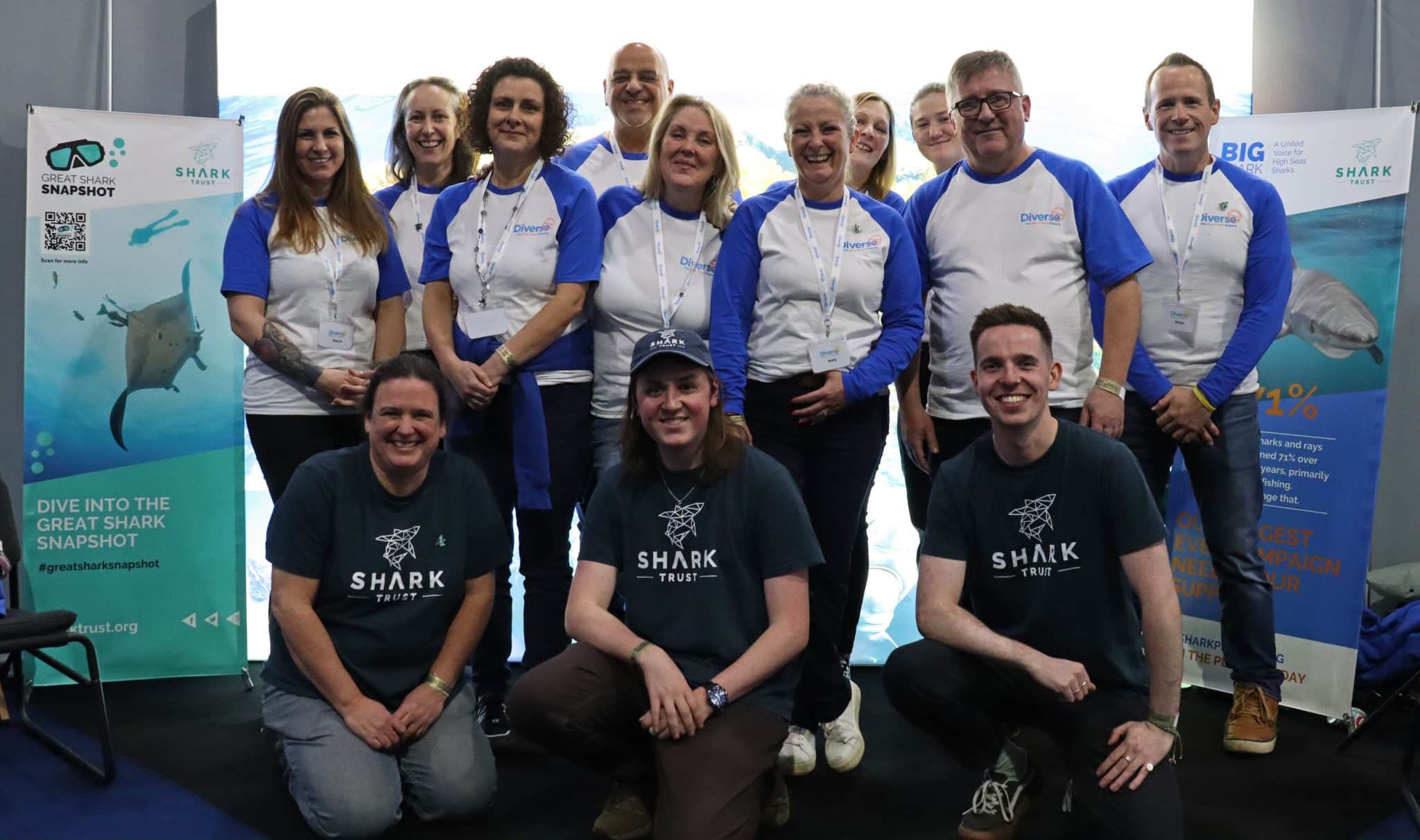
 Corporate Patrons provide a valuable boost to the work of The Shark Trust. The Trust team works globally to safeguard the future of sharks, and their close cousins, the skates and rays, engaging with a global network of scientists, policymakers, conservation professionals, businesses and supporters to further shark conservation.
Corporate Patrons provide a valuable boost to the work of The Shark Trust. The Trust team works globally to safeguard the future of sharks, and their close cousins, the skates and rays, engaging with a global network of scientists, policymakers, conservation professionals, businesses and supporters to further shark conservation.
Specialist tour operator Diverse Travel has operated since 2014 and is committed to offering its guests high quality, sustainable scuba diving holidays worldwide. Working together with the Shark Trust will enable both organisations to widen engagement and encourage divers and snorkellers to actively get involved in shark conservation.
“Sharks are truly at the heart of every diver and at Diverse Travel, we absolutely share that passion. There is nothing like seeing a shark in the wild – it’s a moment that stays with you forever!” says Holly Bredin, Sales & Marketing Manager, Diverse Travel.
“We’re delighted to celebrate our 10th year of business by becoming a Corporate Patron of the Shark Trust. This is an exciting partnership for Diverse and our guests. We will be donating on behalf of every person who books a holiday with us to contribute towards their vital shark conservation initiatives around the world. We will also be working together with the Trust to inspire divers, snorkellers and other travellers to take an active role – at home and abroad – in citizen science projects and other activities.”
Paul Cox, CEO of The Shark Trust, said:
“It’s an exciting partnership and we’re thrilled to be working with Diverse Travel to enable more divers and travellers to get involved with sharks and shark conservation. Sharks face considerable conservation challenges but, through collaboration and collective action, we can secure a brighter future for sharks and their ocean home. This new partnership takes us one more valuable step towards that goal.”
For more information about the Shark Trust visit their website here.
For more about Diverse Travel click here.
-

 News3 months ago
News3 months agoHone your underwater photography skills with Alphamarine Photography at Red Sea Diving Safari in March
-

 News3 months ago
News3 months agoCapturing Critters in Lembeh Underwater Photography Workshop 2024: Event Roundup
-

 Marine Life & Conservation Blogs3 months ago
Marine Life & Conservation Blogs3 months agoCreature Feature: Swell Sharks
-

 Blogs2 months ago
Blogs2 months agoMurex Resorts: Passport to Paradise!
-

 Blogs2 months ago
Blogs2 months agoDiver Discovering Whale Skeletons Beneath Ice Judged World’s Best Underwater Photograph
-

 Gear Reviews2 weeks ago
Gear Reviews2 weeks agoGEAR REVIEW – Revolutionising Diving Comfort: The Sharkskin T2 Chillproof Suit
-

 Marine Life & Conservation2 months ago
Marine Life & Conservation2 months agoSave the Manatee Club launches brand new webcams at Silver Springs State Park, Florida
-

 Gear Reviews3 months ago
Gear Reviews3 months agoGear Review: Oceanic+ Dive Housing for iPhone


